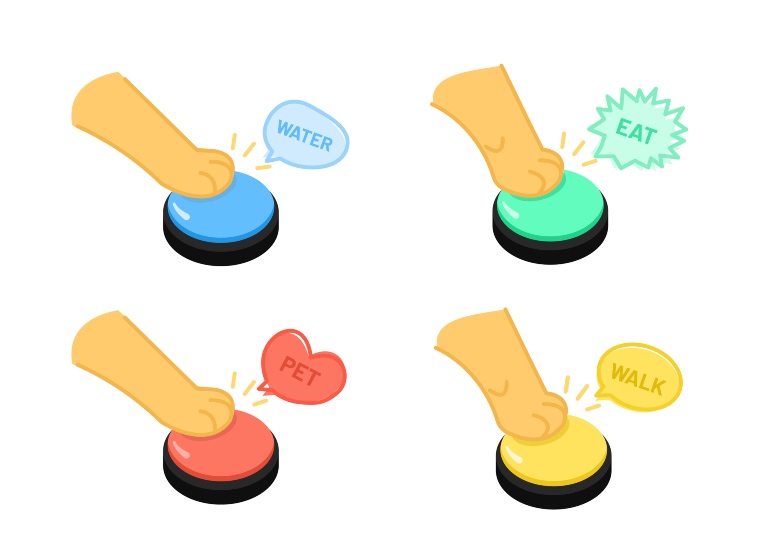By now, we’ve all either seen or heard of Button Dogs. The ubiquitous videos are all over social media, showing dogs ‘speaking’ with their owners. But are they talking to us? And if not, what’s actually happening? Earlier this week, the Washington Post set out to investigate these questions.
What is a ‘Button Dog’?
Button dogs, as they’re known, communicate with people by pressing large plastic buttons placed on the floor. First, owners record certain nouns, verbs, or adjectives into each button. Then, they are placed in specific orders, with pictures identifying each one. It’s easy to see how this idea has grown so popular. When your dog presses the button for “treat,” and you understand the message they’re encoding, it feels and sounds like language.
Experts say it’s communication, but not exactly language
Although the videos seem to suggest dogs are learning to speak with us, vets say that’s not really the case. “We already understand what dogs are trying to tell us without the buttons,” said Amritha Mallikarjun. “But when we use a human linguistic interface, we start ascribing too much to our joint understanding of these words.”
Mallikarjun is a postdoctoral fellow at the University of Pennsylvania’s Working Dog Center. Notably, she said that it’s important to consider that just because a dog presses a “love” button when they want pets, that doesn’t mean they understand the concept.
But for some scientists, the idea that dogs could learn to speak is worth exploring. At the Comparative Cognition Lab at UC San Diego, Federico Rossano is determining whether button boards allow dogs to “communicate meaningfully.” Significantly, Rossano is collaborating with FluentPet, a company that makes and sells buttons and soundboards. However, the company is not funding the research.
Importantly, Rossano believes that for certain dogs, the buttons allow them to communicate intentionally, rather than simply responding to cues. What this suggests remains to be seen. But as Rossano said, “I wouldn’t be doing this if I didn’t have evidence that this wasn’t random.”
Dogs don’t need to speak to communicate
For now, the consensus is that dogs can associate symbols with actions, but there’s no reason for them to learn how to speak. In fact, Alexandra Horowitz, of Barnard College’s Dog Cognition Lab, said that focusing on the buttons distracts us “from the elaborate communications they already make.”
Experts agree that since dogs already use body language effectively to communicate with us, it makes more sense for dog owners to focus on that instead. And it’s not as simple as one would think, either. From their tails to their ears, dogs have learned how to tell us everything we need to know. All we have to do is learn how to listen.









